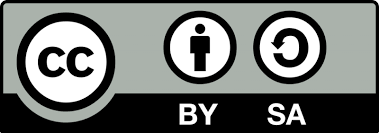How to make a year long plan for Primary and Secondary Education
DOI:
https://doi.org/10.23824/ase.v0i27.593Downloads
Abstract
Despite having explained normatively and conceptually what should be a year-long plan, the reality shows that, in some cases, its treatment by the faculty can improve. Teachers notice a big difference between the curriculum ordered from the Educational Administrations, what they plan in their plan, and what is developed daily with the students in their classroom. Based on the idea of the contextualized design of the institutional center’s documents should be the starting point for the improvement of teaching and learning processes, this article shows a guide that tries to help teachers to develop the basics that should appear in each of the sections of a year-long plan. In any case, the Education Administrations should consider the opportunity to break with the structure of the current year-long plans, and link their design to an interdisciplinary treatment that helps the achievement of the key competences and the objectives outlined in the different educational stages.
References
Polo, I (2010). La Evaluación de las Competencias Básicas. Avances en Supervisión Educativa, (12). Recuperado de https://avances.adide.org
Polo, I (2016). Tiempos de Resultados de Aprendizaje. Avances en Supervisión Educativa, (26). doi: https://doi.org/10.23824/ase.v0i26.570
Polo, I y Bailén E. (2016). Los deberes escolares: El reflejo de un sistema educativo. Avances en Supervisión Educativa, (25). doi: https://doi.org/10.23824/ase.v0i25.543
Polo, I. (2015). Orientaciones para el diseño de instrumentos de evaluación competenciales a partir de los estándares de aprendizaje evaluables. Avances en Supervisión Educativa, (23). doi: https://doi.org/10.23824/ase.v0i23.32
Polo, I., Magdaleno, M., Castillo, E., Cruz, Mª J., Mallada, L., Boada, C., Figueras, M., y Puertas, G. (2014). Pautas para la elaboración de la programación didáctica en la etapa de educación Primaria. Secretaría General Técnica. Departamento de Educación, Universidad, Cultura y Deporte del gobierno de Aragón.
How to Cite
Issue
Section
Published
Keywords:
year-long plan, evaluation, primary, secondary, individual differencesLicense

Attribution Share-Alike CC BY-SA
Those authors who have publications with this magazine, accept the following terms:
A) The authors will retain their copyrights, which will be simultaneously subject to the Creative Commons Attribution License that allows others to re-mix, modify and develop on your work even for commercial purposes, provided they credit you And to license their new works under the same terms.
B) The authors will retain the rights of exploitation of the intellectual property of this work, and especially the rights of reproduction, distribution, transformation in any of its modalities and public communication of said work, which will be simultaneously subject to the License Of recognition of Creative Commons that allows others to re-mix, modify and develop on your work even for commercial purposes, provided they credit you and license your new works under the same terms.
Creative Commons Attribution-ShareAlike 4.0 International Public License

